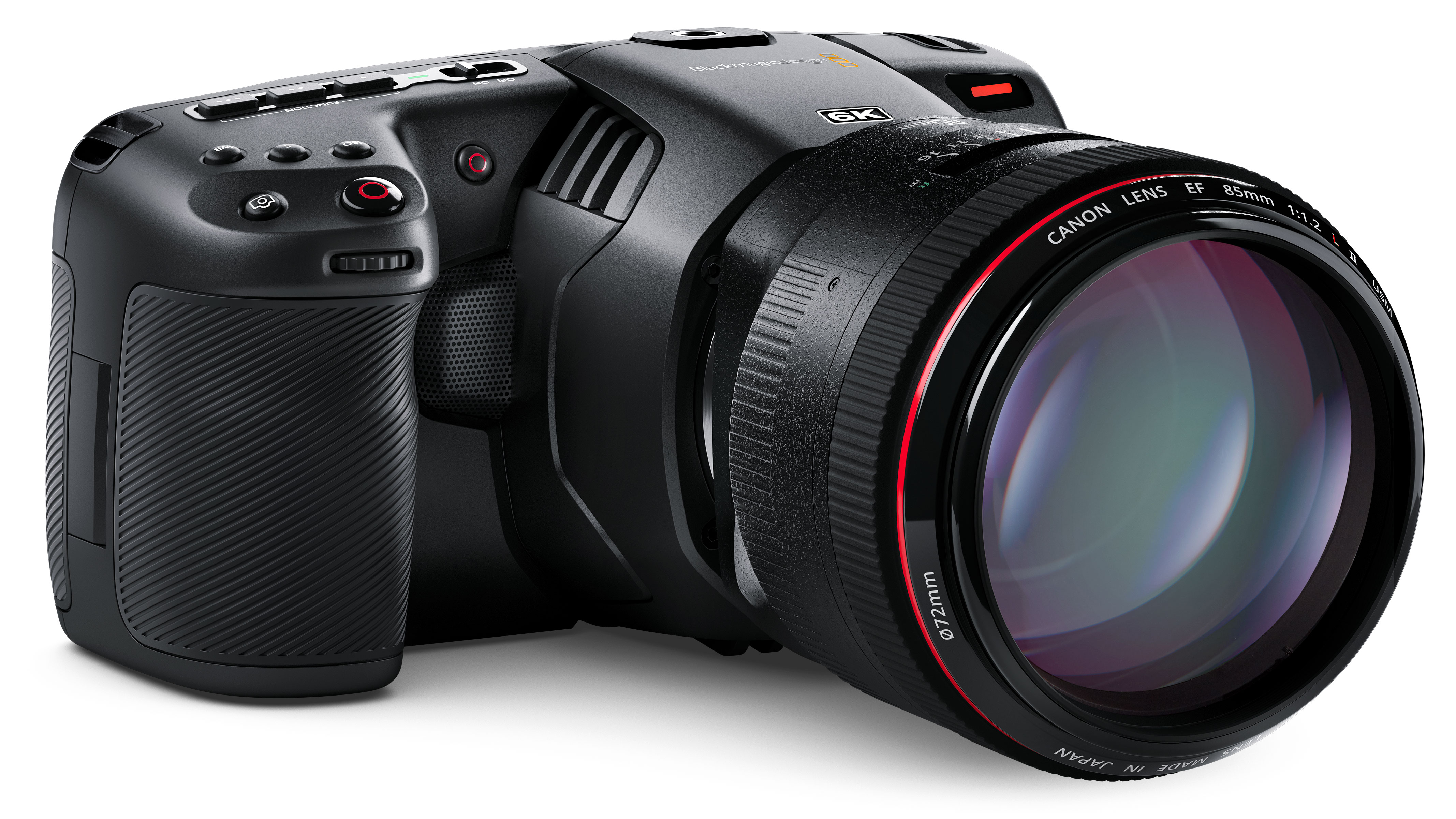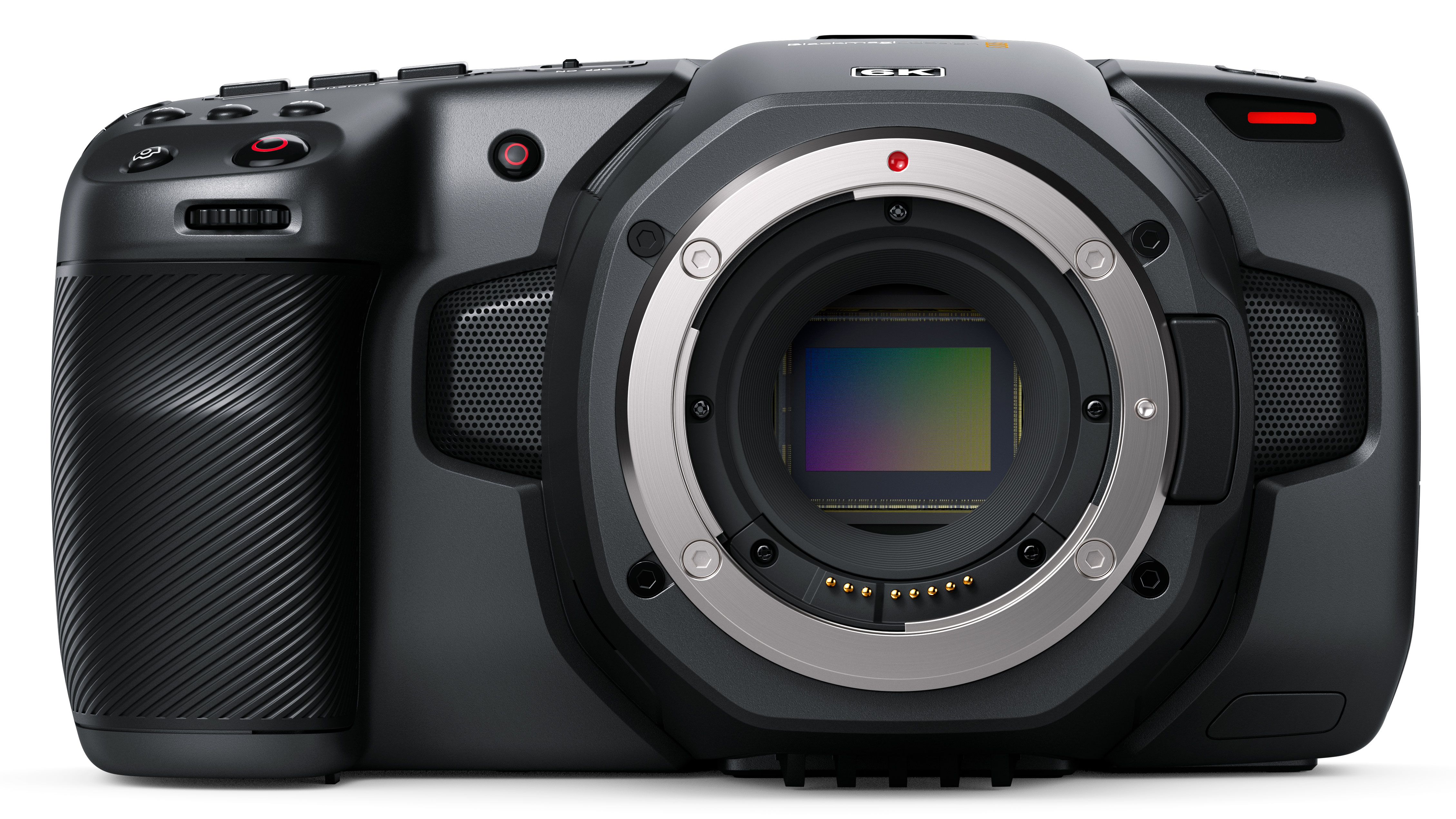Blackmagic Pocket Cinema Camera 6K raises the bar for video resolution
Blackmagic’s new cinema camera takes Canon EF lenses

Blackmagic Design’s original Pocket Cinema 4K camera is a pretty remarkable bit of kit, offering professional film-making features in a small and affordable camera. Now it’s been joined by a 6K model with a larger, Super 35 format, sensor and Canon EF lens compatibility. The previous models in the Blackmagic Design Pocket range have used Micro Four Thirds lenses.
This is big news for professional videographers, from film-makers right down to YouTubers. It’s partly because of the increased resolution, and partly because this opens up a whole world of highly-regarded Canon EF mount lenses to film-makers.
Blackmagic Design Pocket Cinema Camera 6K specifications
Here are the specs for the new 6K Blackmagic camera, with the specs for the original 4K model alongside:
Maximum ISO: 25,600 (25,600)
Dynamic range: 13 stops (13 stops)
3D LUTS support: Yes (yes)
Screen size: 5-inch (5-inch)
File format: Blackmagic RAW (Blackmagic RAW)
Lens mount: Canon EF (MFT)
Sensor size: 23.1 x 12.99mm Super 35 (18.96 x 10mm MFT)
Resolution: 6,144 x 3,456 (4,096 x 2,160)
Price: $2,495 ($1,295)

Pocket Cinema 4K vs 6K models
The specs show that the key differences between the existing 4K camera and the new Pocket Cinema Camera 6K are the larger sensor, higher resolution and Canon EF lens mount. The new camera is understandably more expensive, but still well-placed to compete directly with current full-frame mirrorless cameras.
The new 6K camera will shoot up to 50fps at 6144 x 3456 16:9 or 60fps at 6144 x 2560 2.4:1 and 60fps at 5744 x 3024 17:9. For higher frame rates they can window the sensor and shoot up to 120fps at 2.8K 2868 x 1512 17:9. Videomakers can even work in true anamorphic 6:5 using anamorphic lenses in 3.7K 60fps at 3728 x 3104.
The new camera features built-in CFast and SD UHS-II card slots, and a USB-C expansion port for recording direct to an external video recorder. The camera also includes a full size HDMI connector for use with an external monitor with support for HDR and clean 10-bit output. There’s also a mini XLR mic socket with 48V phantom power for attaching promicrophones, a 3.5mm mic input, headphone connection and a locking DC power connector.
The best camera deals, reviews, product advice, and unmissable photography news, direct to your inbox!
Both cameras will continue in the current lineup, but Blackmagic says the new 6K model now offers a much better upgrade path from the original Blackmagic Pocket Cinema 4K camera.
The similar looking Sharp 8K camera is expected to be available later this year - which will use Micro Four Thirds lenses, previously favored by Blackmagic Design.
We’re told the new Blackmagic camera is just as straightforward to use as the existing model, but Blackmagic points out the increased resolution will offer much more flexibility for cropping and reframing in post production.
The Blackmagic Pocket Cinema Camera 6K should be available immediately, and will cost £2,025 / $2,495.

Read more:

Rod is an independent photography journalist and editor, and a long-standing Digital Camera World contributor, having previously worked as DCW's Group Reviews editor. Before that he has been technique editor on N-Photo, Head of Testing for the photography division and Camera Channel editor on TechRadar, as well as contributing to many other publications. He has been writing about photography technique, photo editing and digital cameras since they first appeared, and before that began his career writing about film photography. He has used and reviewed practically every interchangeable lens camera launched in the past 20 years, from entry-level DSLRs to medium format cameras, together with lenses, tripods, gimbals, light meters, camera bags and more. Rod has his own camera gear blog at fotovolo.com but also writes about photo-editing applications and techniques at lifeafterphotoshop.com
